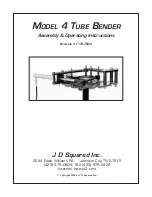
ID-AL EventPlayer mkII
Quick Start Guide V1.0 for EP220 and EP230
1 Introduction
The EventPlayer mkII range is composed of standalone show
control and audio players that manage WAV/MP3/SC2 files stored
on a microSD card or a USB flash drive. Files can be played
automatically according to an “AutoPlay” setting, a timestamped
programming, or a triggering by external events (input contacts,
RS-232 or web commands, infrared remote control).
1
microSD card slot
2
DMX512 output, standard female XLR3 connector
3
Backlit LCD display
4
Clickable knob (volume and settings menu)
5
Status LED
6
Infrared sensor
7
0 dBu line-level stereo audio input, 3.5 mm (TRS) jack
8
0 dBu line-level stereo audio output, RCA connectors
9
Class D amplified speaker stereo audio output, pluggable terminal blocks
10 Standalone opto-isolated input and power supply output, pluggable terminal block
11 RS-232 serial link and power supply output, pluggable terminal block
12 10/100 Mbps Ethernet, RJ45 connector
13 USB Host 2.0 for USB flash drive, type-A receptacle
14 External DC power supply chassis socket
15 RJ9 connector for external infrared sensor
16 USB Device 2.0 for USB-to-DMX512 feature, Micro-B receptacle
17 8 opto-isolated input contacts and power supply output, pluggable terminal block
18 8 MOSFET outputs and power supply output, pluggable terminal block
19 5 V DC output, pluggable terminal block
This guide explains how to quickly start up the player for the first use. For the firmware, additional software and the
complete user guide of the product, see the support page of the EventPlayer mkII on www.id-al.com.
2 Preparation of the Storage Device
Choose a quality microSD card or USB flash drive, and format it as
FAT32. Store on it useful files according to the organization demanded
by the player (see given opposite example). Do not use special or
accented characters.
•
Files at the root of the storage device:
°
serial.txt
(optional): file defining the serial frames to send.
See the chapter RS-232 Serial Link.
°
scheduler.tm2
(optional): timestamped programming file to
generate with our Scheduler software.
•
Organization of the folders at the root:
°
No subfolders allowed.
°
Naming:
xxx [TAG1][TAG2] Name
xxx
: folder no. from
000
to
999
used by the commands.
The AutoPlay feature uses the
000
folder.
[TAGx]
(optional): tags controlling the playback. See the
chapter Folder and File Tags.
Name
(optional): folder name (free).
•
Organization of the files in the folders:
°
Format: WAV, MP3 or SC2.
°
Naming:
xxx [TAG1][TAG2] Name.ext
xxx
: file no. from
001
to
999
defining the playback order in
sequential mode. Optional and unused in random mode.
[TAGx]
(optional): tags controlling the playback. See the
chapter Folder and File Tags.
Name
(optional): filename (free).
ext
:
wav
,
mp3
or
sc2
extension.
© 2018, Waves System - 7 impasse de La Ville en Bois, 44830 Bouaye, France - Phone: +33 (0)2 40 78 22 44 - [email protected]






















